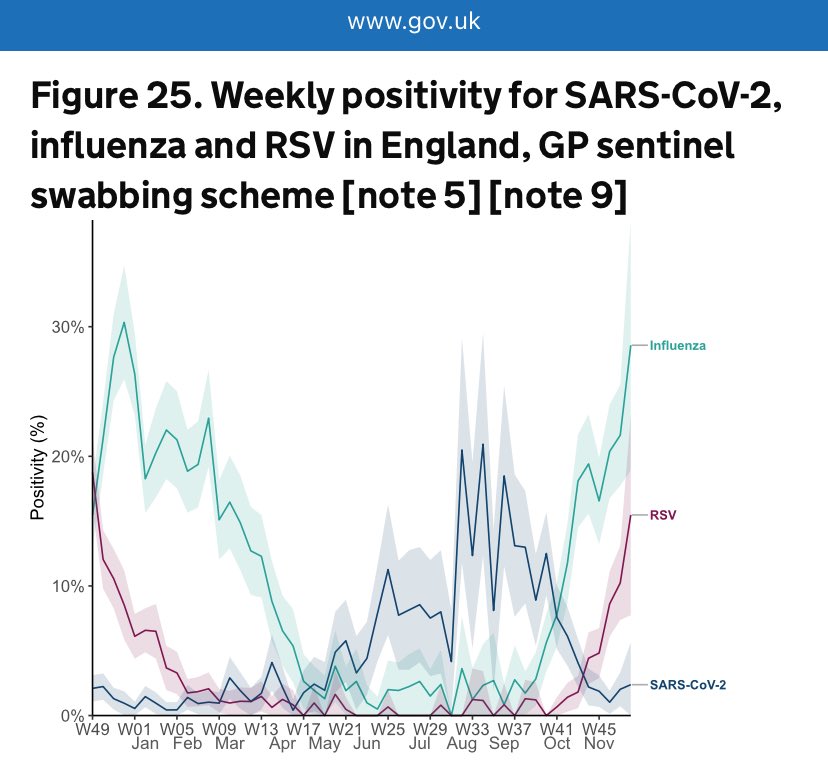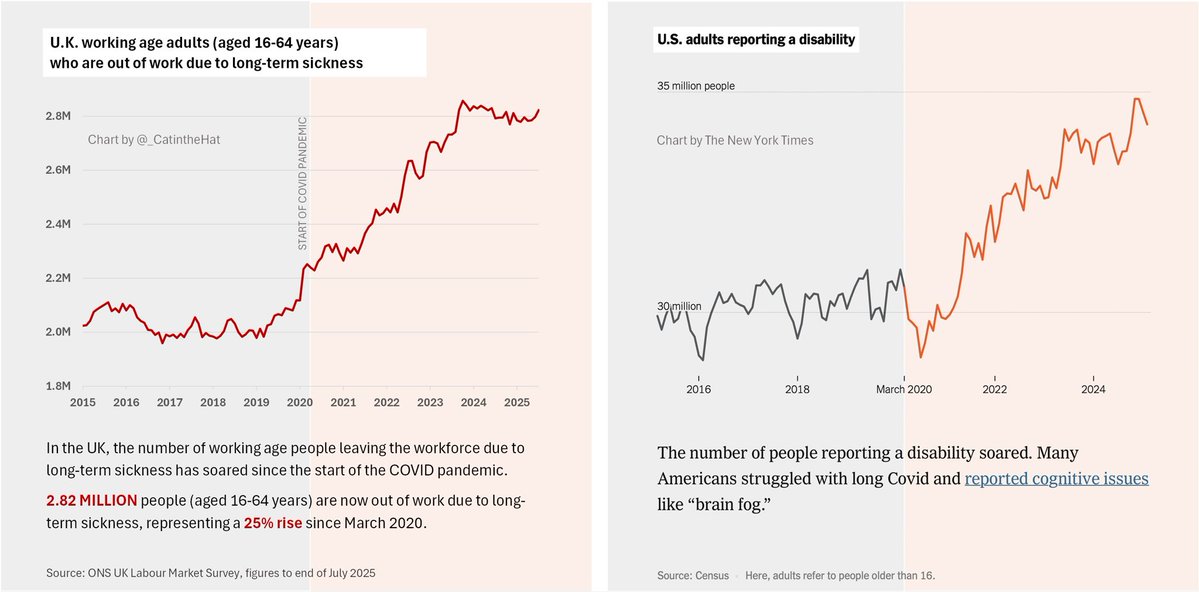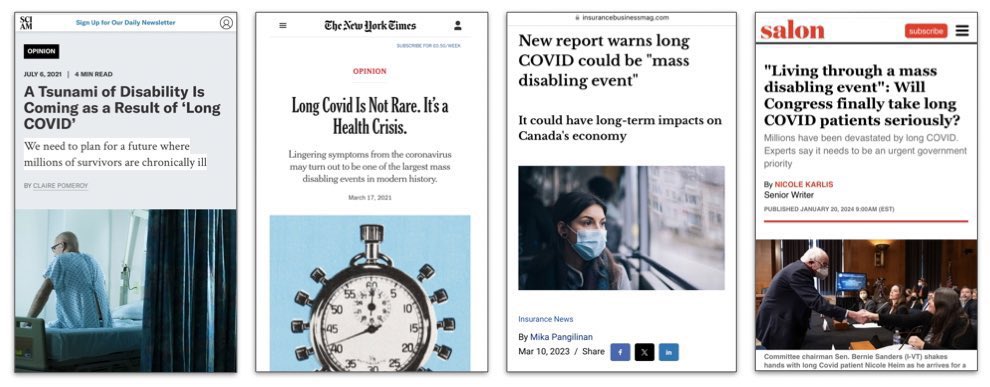PERSISTENT ABSENCE
I’ve been scratching my head trying to figure out where this magical 440,000 figure came from which the DfE are quoting as the reduction in persistent absence…
…because that’s NOT what the official data shows!!
Read on to find out more…
🧵⬇️

I’ve been scratching my head trying to figure out where this magical 440,000 figure came from which the DfE are quoting as the reduction in persistent absence…
…because that’s NOT what the official data shows!!
Read on to find out more…
🧵⬇️
https://twitter.com/gilliankeegan/status/1779820660073570728
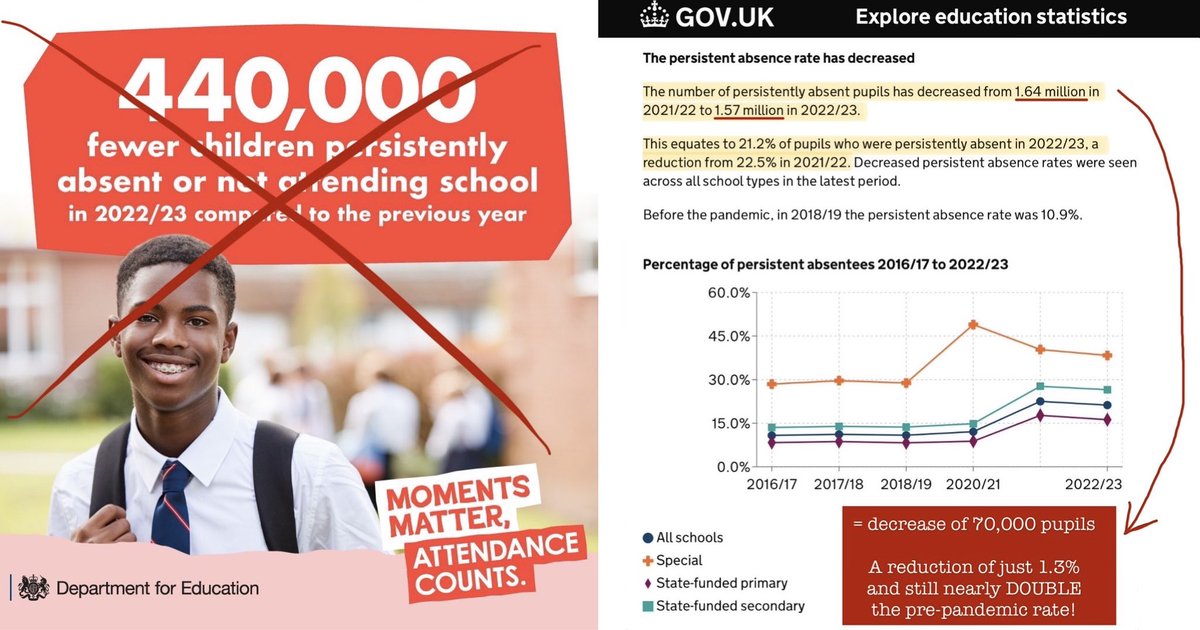
According to the latest DfE report, the number of persistently absent pupils decreased from:
▪️22.5% in 2021/22
= 1.64 million pupils
to
▪️21.2% in 2022/23
= 1.57 million pupils
That’s a reduction of just 70,000 pupils, NOT 440,000!
…e-education-statistics.service.gov.uk/find-statistic…

▪️22.5% in 2021/22
= 1.64 million pupils
to
▪️21.2% in 2022/23
= 1.57 million pupils
That’s a reduction of just 70,000 pupils, NOT 440,000!
…e-education-statistics.service.gov.uk/find-statistic…

The more important point that is rather glossed over here is that the persistent absence rate of 21.2% in 2022/23 is still nearly DOUBLE the pre-pandemic rate of 10.9%.
Hardly something to be boasting about!
Hardly something to be boasting about!

But if the official DfE report states that just 70,000 fewer children have been persistently absent in 2022/23 compared to the previous year…
…why is the government quoting a reduction of 440,000 pupils, more than 6 times the official figure?!
We need to dig a little deeper…
…why is the government quoting a reduction of 440,000 pupils, more than 6 times the official figure?!
We need to dig a little deeper…

Up until April 2022, an additional code was used in school registers:
▪️CODE X: “Not attending in circumstances related to COVID”.
Code X was used in the Autumn & Spring terms in 2021/22.
After April 2022, this code was no longer used for this purpose.
assets.publishing.service.gov.uk/media/6329a77a…

▪️CODE X: “Not attending in circumstances related to COVID”.
Code X was used in the Autumn & Spring terms in 2021/22.
After April 2022, this code was no longer used for this purpose.
assets.publishing.service.gov.uk/media/6329a77a…

Prior to April 2022, Code X was used for children who were required to self-isolate (eg. due to close contact) but who did *not* have Covid themselves (those with Covid were recorded as Code I for illness).
Importantly: Code X is NOT counted as an absence in official figures.
Importantly: Code X is NOT counted as an absence in official figures.

Of course, if you include these Code X absences (which are NOT included in official figures), then the number of pupils who missed more than 10% of sessions in 2021/22 is considerably higher.
370,000 pupils higher to be exact.
370,000 pupils higher to be exact.

You may notice a subtlety in the wording used here.
In the official report, they don’t describe these pupils as persistently absent, they refer to them as pupils who missed 10% or more sessions…
…because Code X absences DON’T count towards official persistent absence figures.
In the official report, they don’t describe these pupils as persistently absent, they refer to them as pupils who missed 10% or more sessions…
…because Code X absences DON’T count towards official persistent absence figures.

So there we are… mystery solved.
The way they arrived at the 440,000 reduction in pupils who are ‘persistently absent’ is by including Code X absences which are NOT officially counted as absences.
I don’t know about you, but this feels a little bit like cheating to me…
The way they arrived at the 440,000 reduction in pupils who are ‘persistently absent’ is by including Code X absences which are NOT officially counted as absences.
I don’t know about you, but this feels a little bit like cheating to me…

Now you may be wondering what’s causing all this persistent absence…
In 2022/23, the #1 driver of persistent absence in every age group was ILLNESS.
In fact, in primary schools, persistent absences due to ILLNESS accounted for OVER HALF of the total.
ffteducationdatalab.org.uk/2023/11/persis…

In 2022/23, the #1 driver of persistent absence in every age group was ILLNESS.
In fact, in primary schools, persistent absences due to ILLNESS accounted for OVER HALF of the total.
ffteducationdatalab.org.uk/2023/11/persis…

In 2022/23, persistent absences were highest in Autumn:
▪️Autumn: 24.2%
▪️Spring: 20.6%
▪️Summer: 23.9%
Let’s take a closer look at what was driving persistent absences that term.
▪️12.4% of persistent absences in Autumn 2022 were solely due to ILLNESS.
▪️Autumn: 24.2%
▪️Spring: 20.6%
▪️Summer: 23.9%
Let’s take a closer look at what was driving persistent absences that term.
▪️12.4% of persistent absences in Autumn 2022 were solely due to ILLNESS.

And yet, despite this, our education leaders stubbornly refuse to acknowledge that ILLNESS is the primary driver of the attendance crisis.
The narrative always focuses on truancy, anxiety, child mental health problems, loss of routine during lockdown, etc…
The narrative always focuses on truancy, anxiety, child mental health problems, loss of routine during lockdown, etc…
Yes, these do all play a part in the bigger picture.
But this narrative completely fails to address the elephant in the room.
The PRIMARY driver of the high rates of pupil absence is ILLNESS, as the data clearly shows.
But illness never even gets so much as a mention!
But this narrative completely fails to address the elephant in the room.
The PRIMARY driver of the high rates of pupil absence is ILLNESS, as the data clearly shows.
But illness never even gets so much as a mention!
The simple truth is that we now have another highly infectious respiratory virus in the mix, namely Covid-19…
…so it’s really not surprising that we have more illness absence.
The graph below illustrates this point neatly (h/t @PaulMainwood).
…so it’s really not surprising that we have more illness absence.
The graph below illustrates this point neatly (h/t @PaulMainwood).
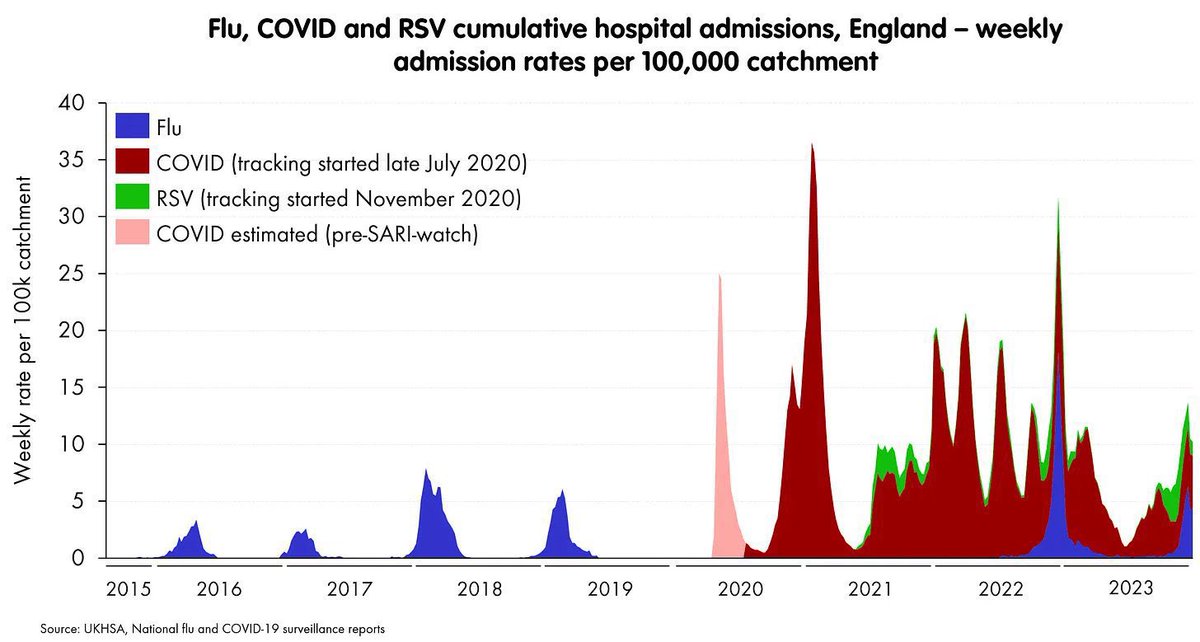
Children are not being kept at home because they’re truanting…
…they’re staying home because they are genuinely ill & the government are doing absolutely NOTHING to stop it spreading!!
Just look at the comments on this recent mumsnet thread ⬇️
mumsnet.com/talk/am_i_bein…
…they’re staying home because they are genuinely ill & the government are doing absolutely NOTHING to stop it spreading!!
Just look at the comments on this recent mumsnet thread ⬇️
mumsnet.com/talk/am_i_bein…
Biorisk consultant @brownecfm articulates it perfectly in this succinct thread:
“With Covid in a state of constant and unmitigated transmission, children will be sick more often.”
“It’s literally that obvious.”
“If you don’t address Covid, you’re not addressing the problem.”

“With Covid in a state of constant and unmitigated transmission, children will be sick more often.”
“It’s literally that obvious.”
“If you don’t address Covid, you’re not addressing the problem.”
https://twitter.com/brownecfm/status/1770134769424122164

It’s little wonder so many parents are furious about the government’s irresponsible attendance campaign which actively encourages parents to send sick children to school, as covered here in iNews by @AasmaDay.
🔗 inews.co.uk/news/education…

🔗 inews.co.uk/news/education…

This government attendance campaign is utterly counter-productive.
By having sick kids in school, it just spreads the illness to all the other children and teachers, meaning MORE kids and teachers end up sick.
This is a more succinct way of putting it by @drsimonwilliams ⬇️

By having sick kids in school, it just spreads the illness to all the other children and teachers, meaning MORE kids and teachers end up sick.
This is a more succinct way of putting it by @drsimonwilliams ⬇️
https://twitter.com/drsimonwilliams/status/1755567168828117305

‘Covid’ may have become a taboo word, but we need to face up to the inconvenient truth that it’s making our kids sick… a LOT.
‘Living with Covid’ shouldn’t mean just ignoring it.
It should mean making environments as safe as possible to reduce the risk of infection.
‘Living with Covid’ shouldn’t mean just ignoring it.
It should mean making environments as safe as possible to reduce the risk of infection.
UK schools are generally poorly ventilated, creating perfect conditions for disease transmission, especially in winter when windows are usually closed.
A CO₂ level ~800ppm indicates good ventilation.
Below are the horrifically high CO₂ levels for a typical UK classroom.

A CO₂ level ~800ppm indicates good ventilation.
Below are the horrifically high CO₂ levels for a typical UK classroom.
https://twitter.com/nat_e_pearson/status/1734576204559061048

Cleaning the air by improving ventilation & air filtration is a simple, low cost, non-intrusive measure that could HUGELY reduce the spread of Covid in schools.
And it doesn’t just work for Covid - it helps reduce transmission of ALL airborne pathogens - measles, flu, RSV etc.
And it doesn’t just work for Covid - it helps reduce transmission of ALL airborne pathogens - measles, flu, RSV etc.
Clean air in schools is not a restrictive mitigation; it’s an ENABLING mitigation.
It would allow our children to attend school with less risk, less illness, less absence.
And for clinically vulnerable children, it could even be a life-saver.
There’s no downside to clean air.
It would allow our children to attend school with less risk, less illness, less absence.
And for clinically vulnerable children, it could even be a life-saver.
There’s no downside to clean air.
There’s a mountain of evidence that improving ventilation & air filtration can hugely reduce the spread of airborne illnesses:
▪️A study conducted at Addenbrooke’s hospital showed that air filters removed almost all traces of airborne Covid virus.
cam.ac.uk/research/news/…
▪️A study conducted at Addenbrooke’s hospital showed that air filters removed almost all traces of airborne Covid virus.
cam.ac.uk/research/news/…
▪️An Italian study showed that ventilation delivering 6 air changes per hour could reduce transmission of Covid by a massive 82%.
reuters.com/world/europe/i…

reuters.com/world/europe/i…

▪️A Swiss study demonstrated that HEPA air filters delivering a clean air delivery rate of 5 air changes per hour (800m3/h) in a typical classroom led to a 5-fold decrease in the cumulative viral dose absorbed by exposed occupants.
smw.ch/index.php/smw/…

smw.ch/index.php/smw/…

▪️A study conducted in Bradford showed that Covid-related illness absence in schools was reduced by >20% when HEPA air filters were used in classrooms.
newscientist.com/article/239871

newscientist.com/article/239871
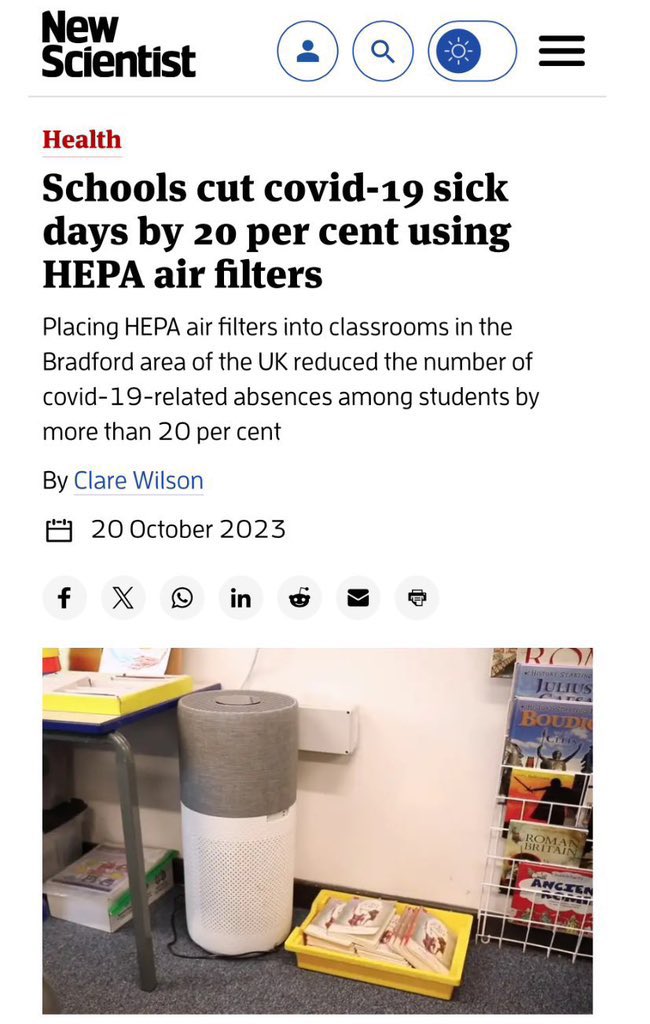
If you’d like to see more research, here’s a link to a website which has collated 56 research studies from around the world which demonstrate the effectiveness of air filters at removing Covid from the air in different settings:
H/t @CarlvKeirsbilck medium.com/@carlvank/luch…
H/t @CarlvKeirsbilck medium.com/@carlvank/luch…
Of course, the government have quietly invested in clean air and installed state-of-the-art air filtration systems in the Houses of Parliament, Ministry of Defence and other government buildings.
purifiedair.com/case-studies/

purifiedair.com/case-studies/

…and the Department for Education have recently equipped themselves with brand new enhanced air handling systems at their Westminster HQ.
willmottdixoninteriors.co.uk/news/the-moder…

willmottdixoninteriors.co.uk/news/the-moder…

We don’t have to worry about the water we drink, because we invest in water treatment plants which filter & clean it to a high standard.
It’s just one of those things we accept as a given.
We wouldn’t drink dirty water, so why are we breathing dirty indoor air?
It’s just one of those things we accept as a given.
We wouldn’t drink dirty water, so why are we breathing dirty indoor air?

The Mayor of London @SadiqKhan recently announced that air filters are being installed in 200 London schools.
It’s a good start, but we need to go further.
EVERY child has the right to breathe clean indoor air.
EVERY classroom should have air filters.
bbc.co.uk/news/uk-englan…

It’s a good start, but we need to go further.
EVERY child has the right to breathe clean indoor air.
EVERY classroom should have air filters.
bbc.co.uk/news/uk-englan…

• • •
Missing some Tweet in this thread? You can try to
force a refresh





